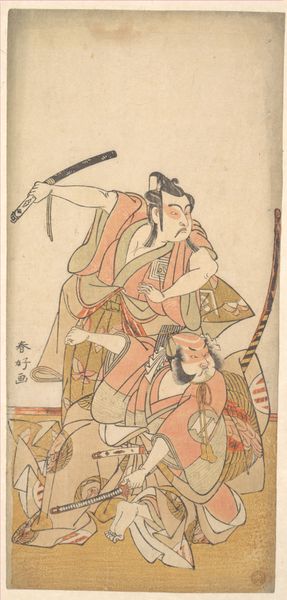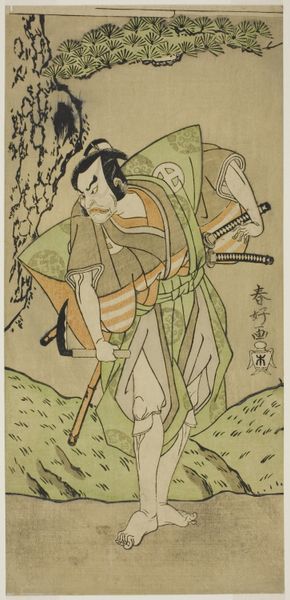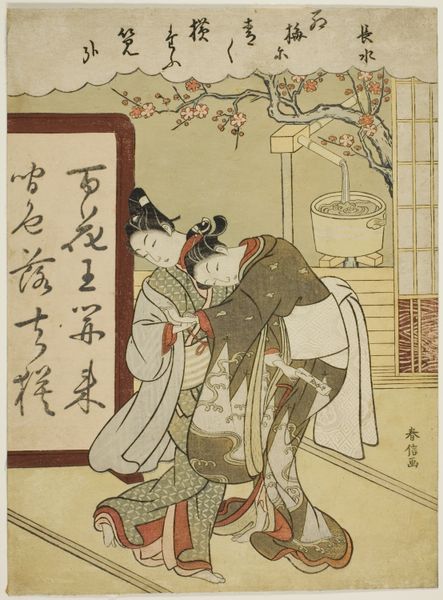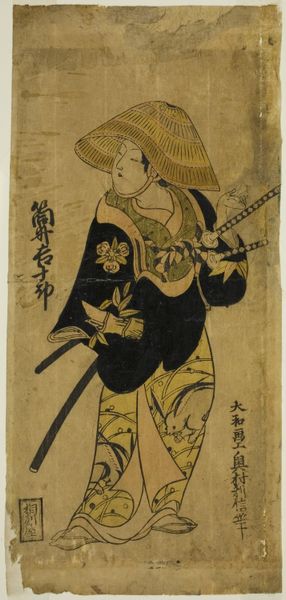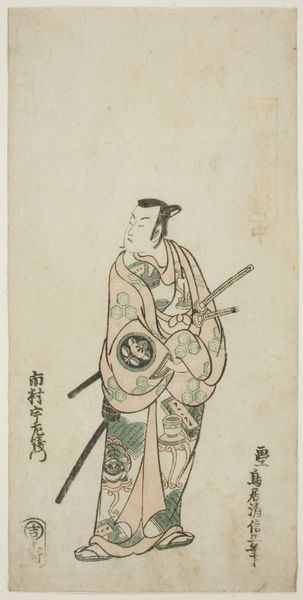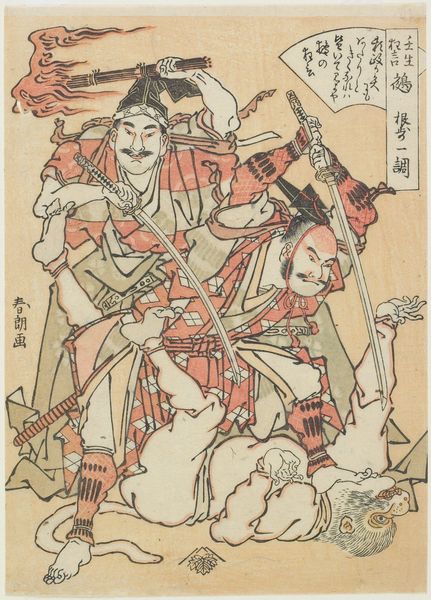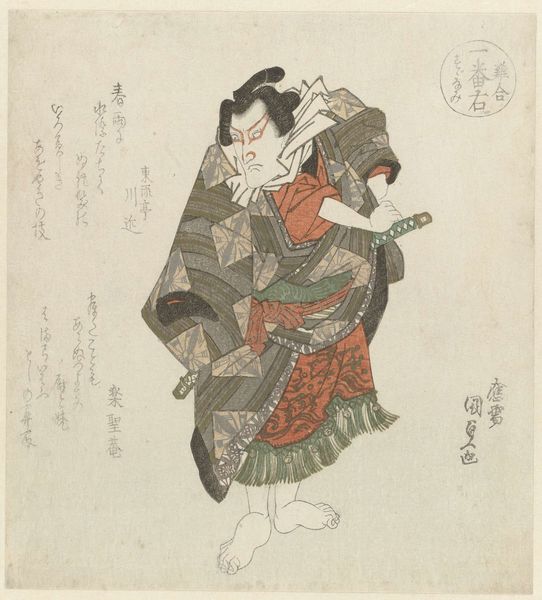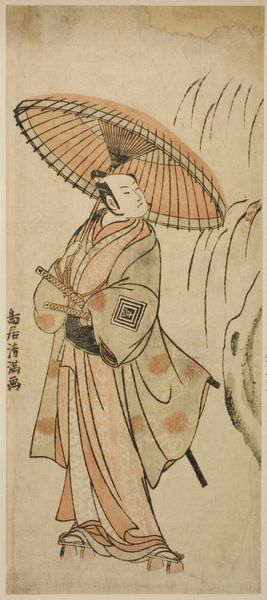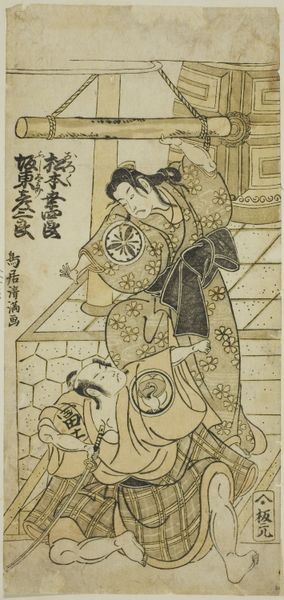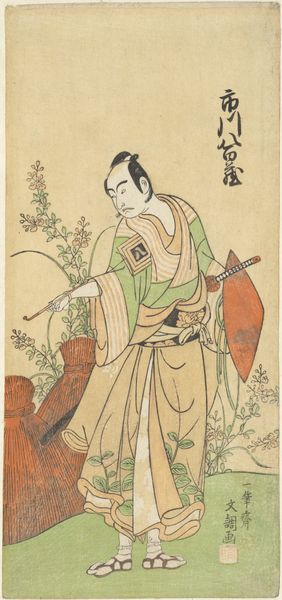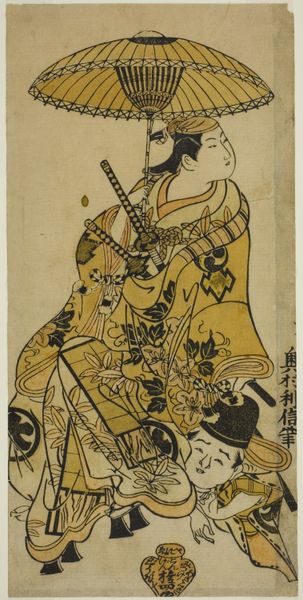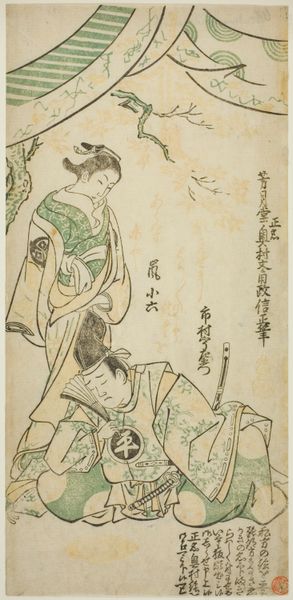
The Actors Otani Hiroji III as Onio Shinzaemon (right), and Nakamura Sukegoro II as Wappa no Kikuo (left) in the Play Iro Moyo Aoyagi Soga, Performed at the Nakamura Theater in the First Month, 1775 c. 1775
0:00
0:00
print, woodblock-print
#
portrait
#
narrative-art
# print
#
asian-art
#
ukiyo-e
#
japan
#
figuration
#
woodblock-print
Dimensions: 29.5 × 13.7 cm (11 5/8 × 5 3/8 in.)
Copyright: Public Domain
Katsukawa Shunko made this woodblock print in 1775, depicting actors in a Kabuki play performed in the Nakamura Theater in Japan. Kabuki theater emerged as a popular form of entertainment during the Edo period, but its development was heavily mediated by social and political forces. The Tokugawa shogunate, seeking to enforce strict social hierarchies, enacted sumptuary laws that restricted commoners’ access to certain forms of art and entertainment. Kabuki, however, thrived by adapting to these constraints. Shunko’s print captures a pivotal scene from the play, but also reflects the highly stylized conventions of Kabuki, from the exaggerated expressions to the elaborate costumes. Woodblock prints like these served as promotional materials for the theater, but they also circulated among a broader audience, popularizing the actors and the plays themselves. By studying playbills, theater records, and government archives, historians can reconstruct the complex social and institutional context in which Kabuki flourished, revealing the ways in which art and entertainment both reflected and challenged the prevailing social norms.
Comments
No comments
Be the first to comment and join the conversation on the ultimate creative platform.
